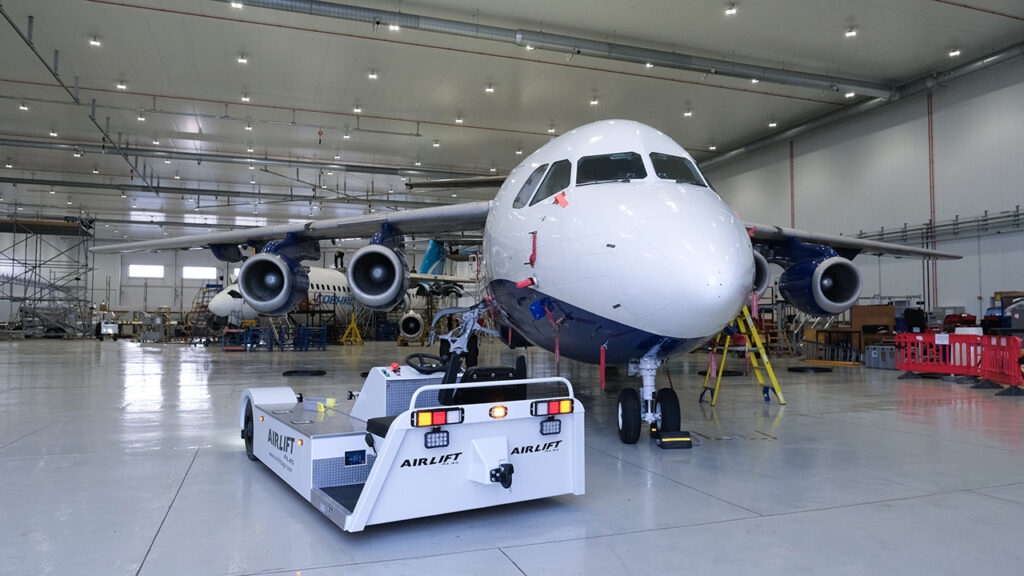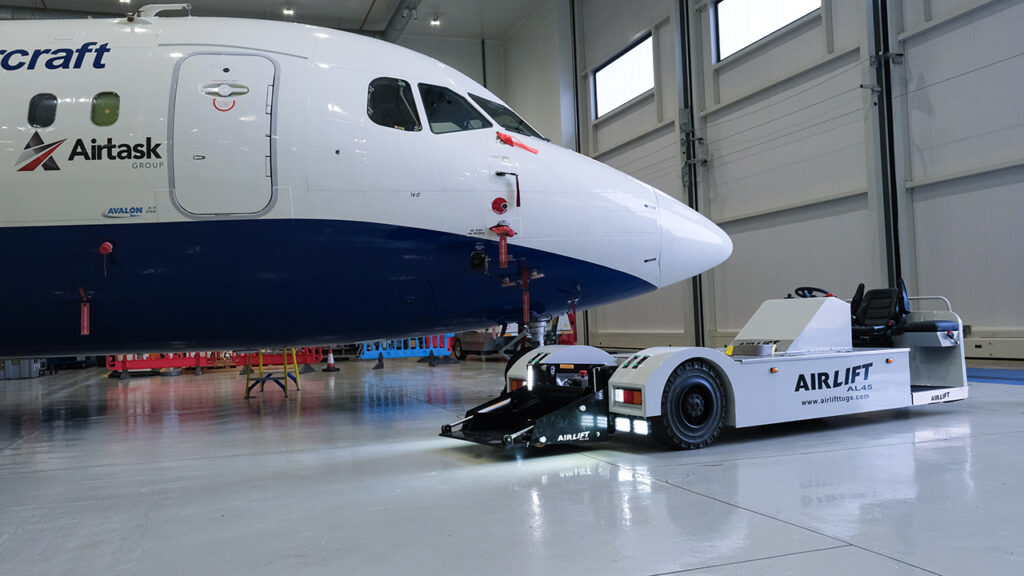
Sustainable towing equipment for the FAAM Airborne Laboratory
The FAAM Airborne Laboratory now has an electric-powered aircraft tug, in a significant move towards reducing carbon emissions from the research facility’s operation.
The FAAM Airborne Laboratory’s research aircraft, a specially adapted BAE-146 aircraft fitted with scientific instruments, requires a vehicle capable of towing and transporting large items around the airfield at Cranfield Airport – including its ground power unit and bulky research equipment.
Alan Woolley, Head of the FAAM Airborne Laboratory, explains the significance of the new tug:
“By changing the way we move the aircraft on the ground, alongside adopting other sustainable practices, we have started to take action on reducing our emissions as a research facility. The FAAM Airborne Laboratory is taking important steps towards net zero goals, while continuing to make world-class measurements of the atmosphere.”
Electric tug for a large research aircraft
Made possible by the Natural Environment Research Council’s Carbon Fund, the research facility recently welcomed the arrival of an electric-powered tug that is capable of transporting the aircraft and its ground power unit over short distances.
Not only will this new tug reduce greenhouse gas emissions and air pollution across the airfield, it will also provide staff with cleaner and quieter working conditions.
The electric tug will be charged using the on-site solar energy supply at Cranfield Airport.
A sustainable future for airborne research
As well as moving to electric powered towing equipment, the FAAM Airborne Laboratory is now using an electric-powered ground power unit, flying with a blend of sustainable aviation fuel, and exploring on-site storage of sustainable aviation fuel – where practicably possible.
By preventing the release of fossil-based greenhouse gas emissions and air pollutants from the ground power unit and aircraft tug, the FAAM Airborne Laboratory is helping to combat climate change and poor air quality through the way it operates – not just through the science it supports.

*The FAAM Airborne Laboratory’s research aircraft is owned by UK Research and Innovation and the Natural Environmental Research Council. It is managed through the National Centre for Atmospheric Science, and leased through the University of Leeds. The aircraft is supported, modified and upgraded by BAE Systems, operated by Airtask Group, and maintained by Avalon Aero. It is hangared in Bedfordshire, with Cranfield Airport at Cranfield University. UK Research and Innovation and the Natural Environmental Research Council have a commitment to achieve net zero by 2040.
